I don’t know about you, but I am feeling a little behind in my canning planning. If you are too, worry not! If we follow these ten simple steps, we’ll both step into preservation season calm and prepared to tackle those bushels of tomatoes and pickles and corn.
I was just chatting with my friend and mentor Margaret Roach of A Way To Garden about all this. (Listen in at her most recent podcast.) Margaret’s a vegetarian and a one-person household, so in some ways she and I put up the harvest very differently, but in other ways there are huge similarities.
We’re joining forces today with dual-giveaways (more about that later in the post) and our best suggestions for how any food preserver can face the canning season with organization and confidence.
Let’s do this.
Get Your Plan Together
1. Consider Your Goals
Some people can purely as an exercise in frugality. Some like the craft of it. Some people like the convenience of shelf-stable foods, others want to avoid BPA in cans. Some people are trying to support their local foodshed, or make sure nothing from the garden goes to waste. Some people are getting ready for zombies, other just want to control what goes into their food.
Most of us have some combination of goals that motivate our home food preservation. Consider yours. Why do you this and what do you want to get out of it?
I can, primarily, for quality, convenience and the joy of it. I like having really convenient pantry staples at the ready without having to turn to commercial convenience food. This means that I focus on versatile basics, like tomatoes and garbanzo beans.
Read more: Zombies vs. The Joy of Canning.
2. Take An Inventory
Before you start canning up dozens of jars of peach mulberry curry sauce or whatever, go spend a few minutes staring into your cupboards, pantry, garage – wherever your food storage happens. You might want to print out a larder assessment sheet for this.
Make a note of what canned items your family really eats through the year – store-bought or home-canned. For us, the big winners are always canned tomatoes, beans, pickles, stock, simple jams with zings of flavor, and pork.
Now it’s time for some hard truths. What preserved goods are languishing in your pantry, several years old and forgotten? Give yourself permission to compost those creations that you know, deep down, you will never eat.
Read More: What Foods Should I Preserve?
3. Seek Out Inspiration
Now’s the fun part! Sit down with a cup of coffee or tea and a few of your favorite canning books and the notes from your inventory. As you flip through your books, just let your food preserver’s heart run wild.
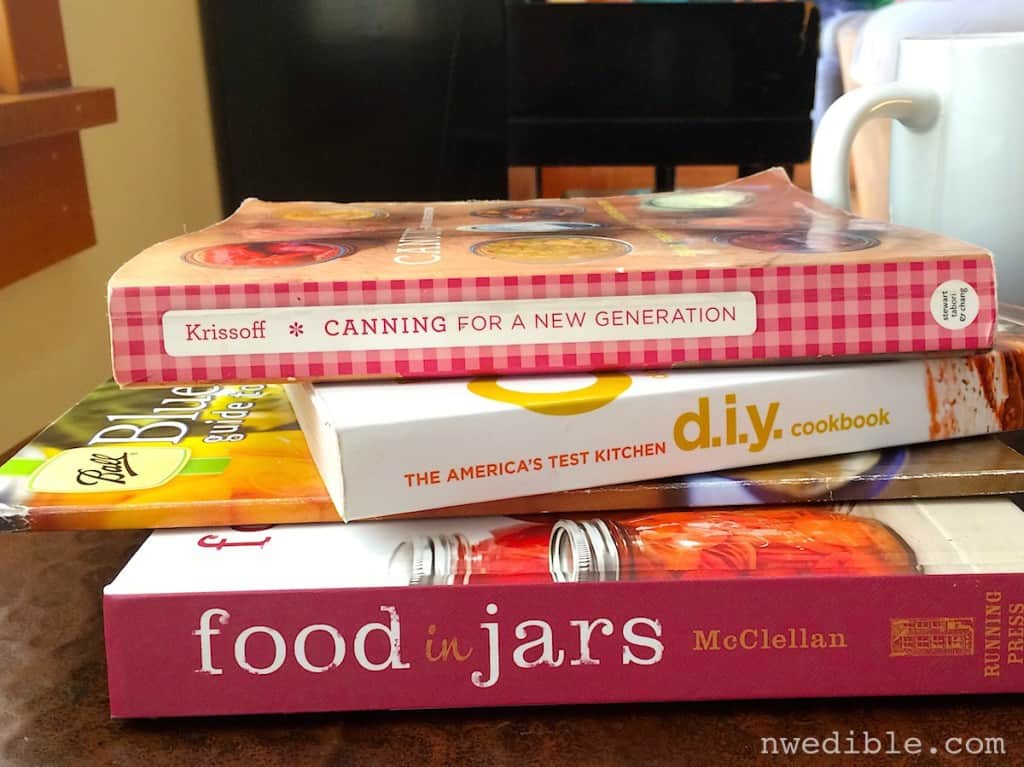
Consider your dream fantasy canning creations, holiday gifts, canning swaps and other situations in which you might give away or trade your jars. When something looks incredible, write it down or flag the page so you can easily find that recipe again.
My favorite canning resources:
- The National Center For Home Food Preservation
- [easyazon_link identifier=”B005SK6Y1Q” locale=”US” tag=”nortediblife-20″]The Ball Blue Book[/easyazon_link] (part of the giveaway below!)
- [easyazon_link identifier=”0762441437″ locale=”US” tag=”nortediblife-20″]Food in Jars[/easyazon_link]
- [easyazon_link identifier=”1584798645″ locale=”US” tag=”nortediblife-20″]Canning For A New Generation[/easyazon_link]
- And you can always [easyazon_link identifier=”1570619913″ locale=”US” tag=”nortediblife-20″]pre-order my book[/easyazon_link], which is not exclusively about canning, but which does contain many of my favorite food preservation recipes, including an awesome one for British style canned baked beans.
4. Fine-Tune Your List
Just like gardeners want to grow all the vegetables, canners typically want to can all the things. But look, we can’t. There aren’t enough hours in day or jars in the house. This is as much about editing your list as it is about scribbling things on it.
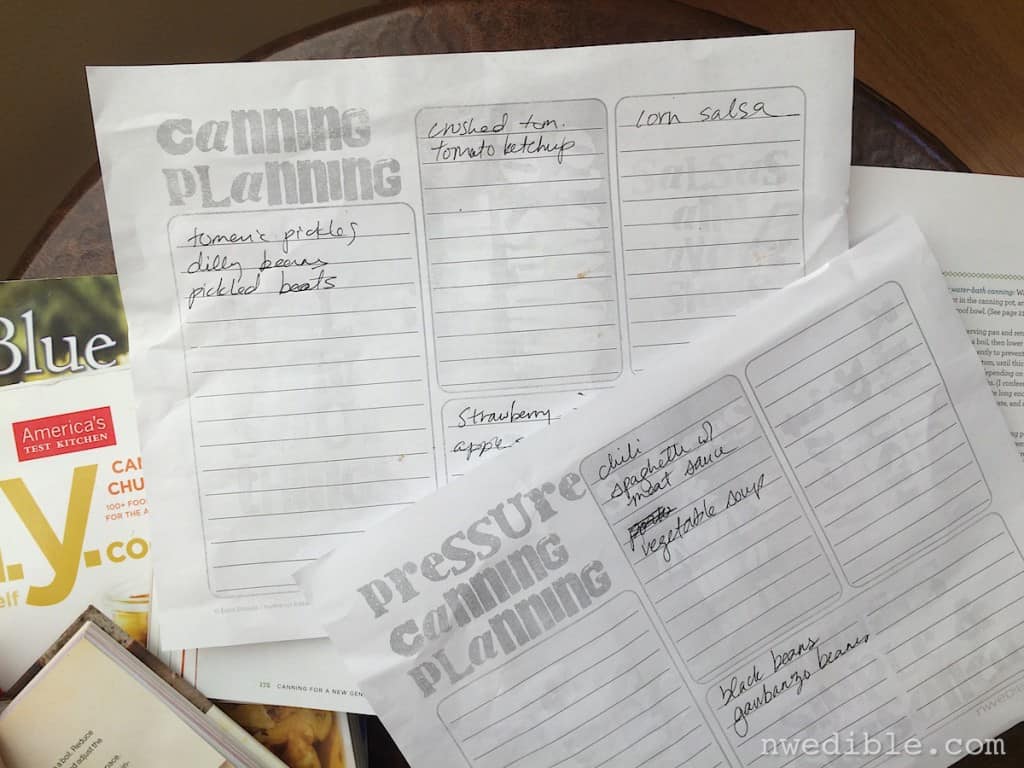
Remember your goals and inventory. Let those guide you as you make your final selections. If you like, go print out my Canning Planning and Pressure Canning Planning sheets – these will help you think about your food preservation by category so you’re less likely to decide you absolutely need 64 types of peach jam (52 is plenty).
Make sure you are selecting recipes from reputable sources that follow safe canning procedures.
5. Check Produce Ripeness Dates
Preserved food is never better than the ingredients it’s made from. We want everything to be at the peak of ripeness when we put it up. That’s when it tastes best and that’s when it’s cheapest if you’re buying.
Some produce – like cabbage – will be available locally for months and months. Some delicate fruit is only available for a few weeks. If you are harvesting your own garden you just have to be psychologically ready for the glut. If you are ordering from a farmer, pre-ordering is always smart.
If you want a specific variety of strawberry or peach from a local farmer, you may have to get even more detailed.
As an example, here’s the 2012 Eastern Washington ripening schedule of different peach varieties, from my friends at Valicoff Farms. You can see that if you are targeting, for example, the Elberta variety for your canning jar you’d better have a pretty good idea of when those peaches will be available or you’ll miss out.

Look back over your list and sanity check that you aren’t over-committed to canning projects based on produce ripening and other stuff in your life. While it’s true that late summer will always be the busiest times to put food up, there’s no reason you should attempt to squeeze applesauce into late August if you’re already planning pickles, tomatoes and peaches. As you can, stretch the process out.
Get Your Gear Together
Ok, now that you’ve got your mental game-plan together, it’s time to make sure your gear is up to snuff, too!
6. Get Your Dial Gauge Pressure Canner Tested
Get your dial gauge pressure canner tested. This is totally non-negotiable. You have to test the dial yearly. Why? Because botulism. Unfortunately, it’s become hard to find places to have the dials tested, so typically you have to ship the dial to the manufacture (Presto). This is a big pain, so if you do have a dial-only gauge pressure canner, look into converting yours to a weighted gauge canner.
If you don’t pressure can fresh vegetables (I don’t) and your canner is used more for meat and dry beans, you can probably put this off until early fall. But if you want canned corn, canned green beans or summer vegetable soup in your pantry, get on this dial-testing asap.
Additional Information: Presto Pressure Canner Service page.
If you have a weighted gauge canner, the weight itself acts to maintain the proper pressure and the dial is just a backup and indicator of when pressure has dropped to 0, so we know that it’s safe to open the canner. If you notice a difference in the pressure reading on the dial and the actual pressure as determined by the weight, you may need to get the dial tuned up but the actual pressure inside the canner should still be safe and accurate.
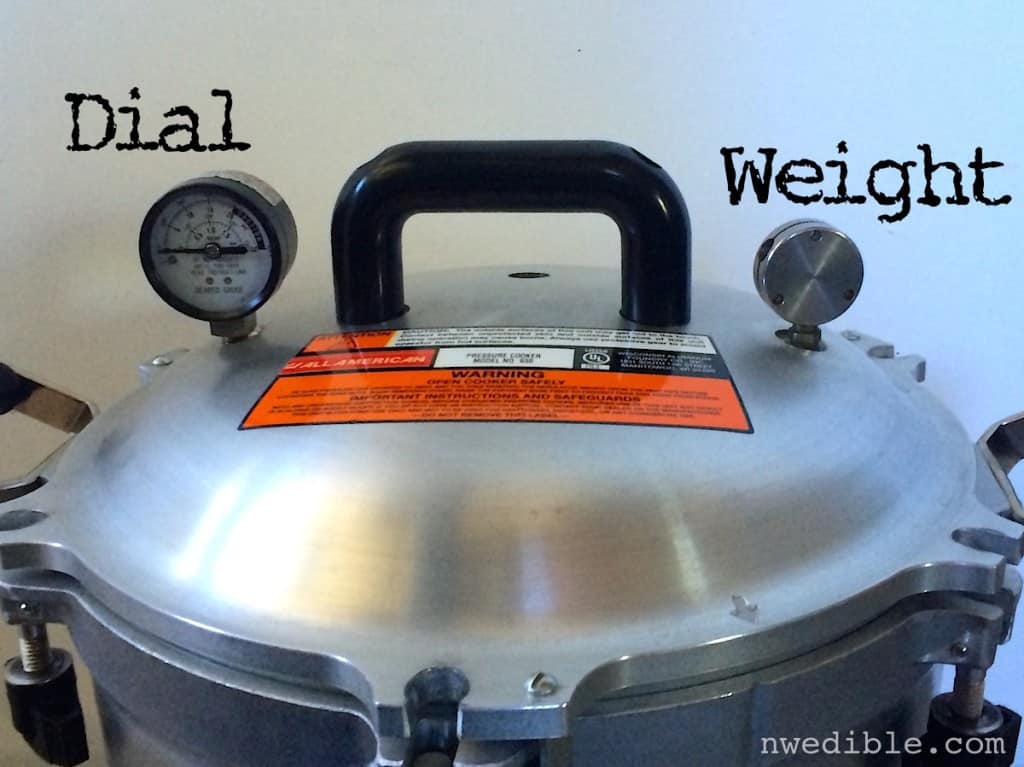
7. Assess your equipment
You do not need one of those lightweight speckled enamel canning pots. In fact, I personally really dislike those. Any pot tall enough to accommodate your jars with a couple inches of boiling water and a couple inches of head room above that is fine for boiling water bath canning. Make sure your canning pot has a rack that works, or make one yourself.
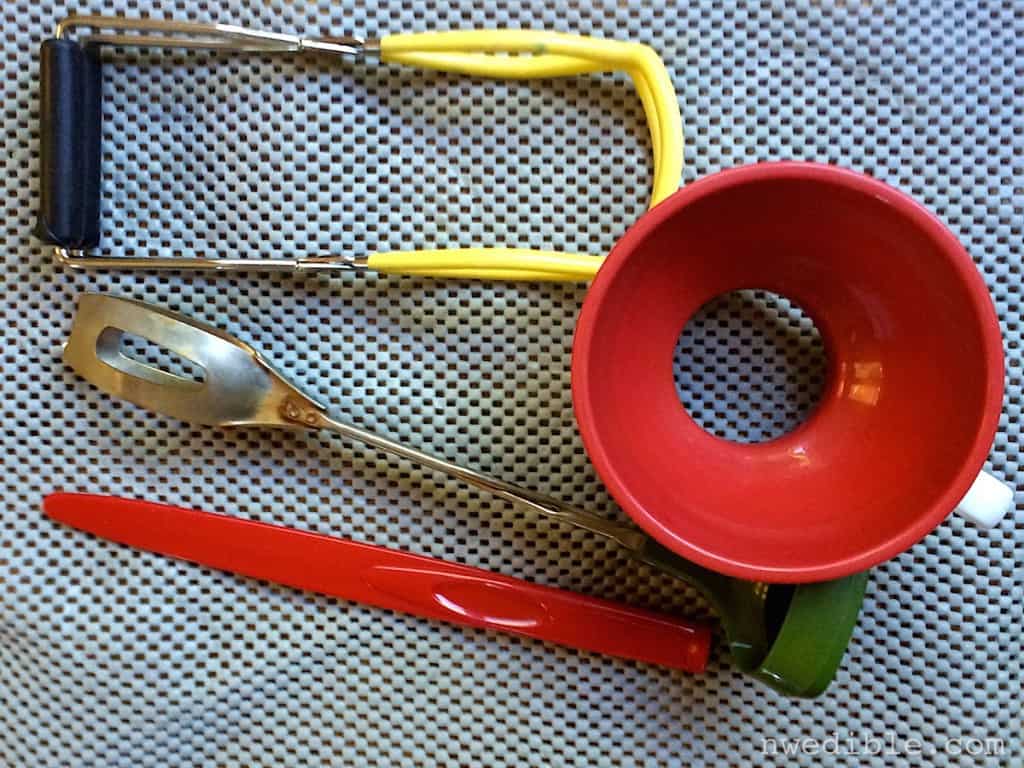
Track down your basic canning utensils and give them a dedicated home so you don’t hunt around when the canning passion is upon you. In addition to normal kitchen utensils like spoons, spatulas and ladles, you will need:
- [easyazon_link identifier=”B007QT4GMQ” locale=”US” tag=”nortediblife-20″]a canning funnel[/easyazon_link] – my favorite one is part of the giveaway.
- [easyazon_link identifier=”B000HJBFGC” locale=”US” tag=”nortediblife-20″]a jar lifter[/easyazon_link], essential for getting hot jars out of hot water safely, also part of the giveaway.
- [easyazon_link identifier=”B003UVK0S8″ locale=”US” tag=”nortediblife-20″]a magnetic lid lifter/bubbler tool[/easyazon_link] for picking up and placing just one lid at a time and removing air bubbles from jars after filling.
8. Inventory your jars and lids
Get a rough idea of how many empty jars you have and, if at all possible, sort them by size so it will be easy for you to grab what you need later.
If you are a canner, you probably always want extra jars. Sadly, now is not the time to buy a whole heap of them. The best deals on new jars happen towards the end of summer, as big box stores try to clear out their inventory. Keep your eyes peeled in several months.
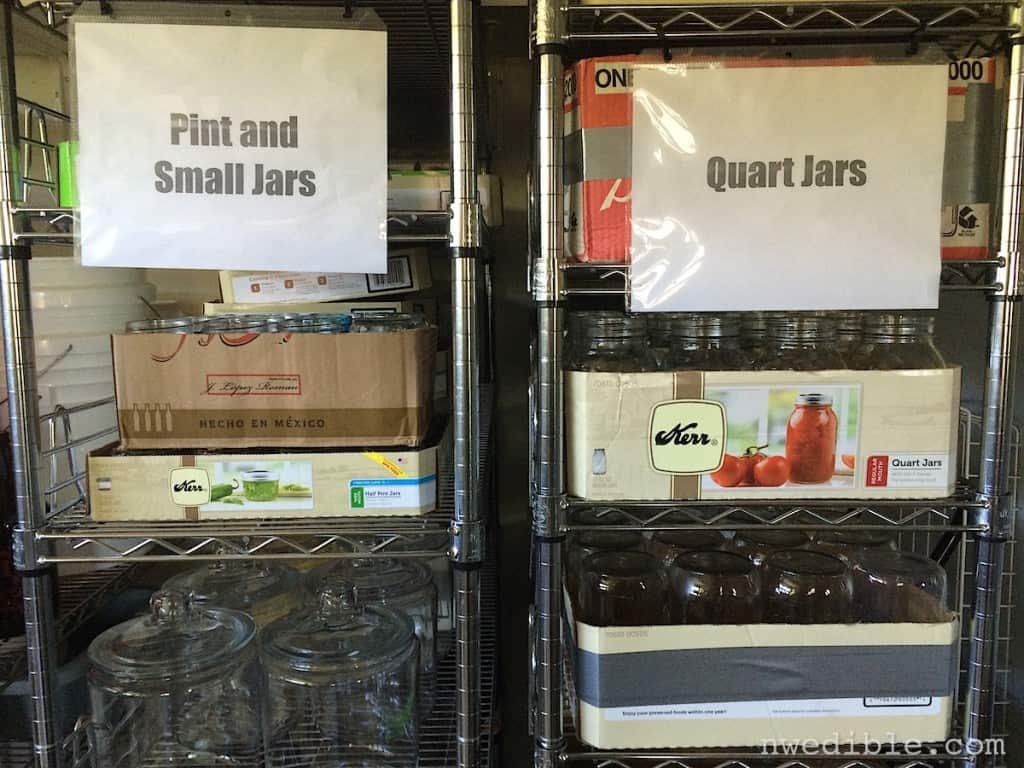
Used jars are always an option, but be warned that many thrift stores charge nearly as much for used jars without lids as it costs to buy jars new with lids! Craigslist, your local Freecycle and Buy Nothing group, garage sales and that nice old lady up the street who’s tired of canning can are better bets.
If you use reusable lids, like Tattler, or glass lidded jars like Weck, inspect your lids and gaskets carefully for signs of wear and tear. U.S. food safety recommendations are to treat rubber gaskets used for canning as single-use items, but according to Marisa at Food In Jars, in Europe gaskets are typically used until they begin to stretch. I follow U.S. food safety regulations.
If you use two piece lids, check to see how many boxes of flats you have. If you are a large-scale canner, it might make sense to [easyazon_link identifier=”B00I17LC92″ locale=”US” tag=”nortediblife-20″]buy lids in bulk[/easyazon_link]. In any event, do keep your eye out for good deals on lids in grocery and hardware stores.
While we’re doing this, let’s go through our rings. If you are like me, you probably have 17 times more rings than will ever need. Remember, after the jars cool and set their seals, it’s best to take off the rings and store the jars with just the sealed flat.
Go through your rings and pull out any that are rusty or no longer perfectly round. Upcycle, recycle or donate extra rings.
9. Stock up on basics.
There are some items that I know I will use a ton of throughout canning season. Vinegar, kosher salt, pickling salt, organic sugar and citric acid are my must-haves for jamming, pickling and processing my way through hundreds of pounds of seasonal produce. Your basics might also include pectin and bottled lemon juice.
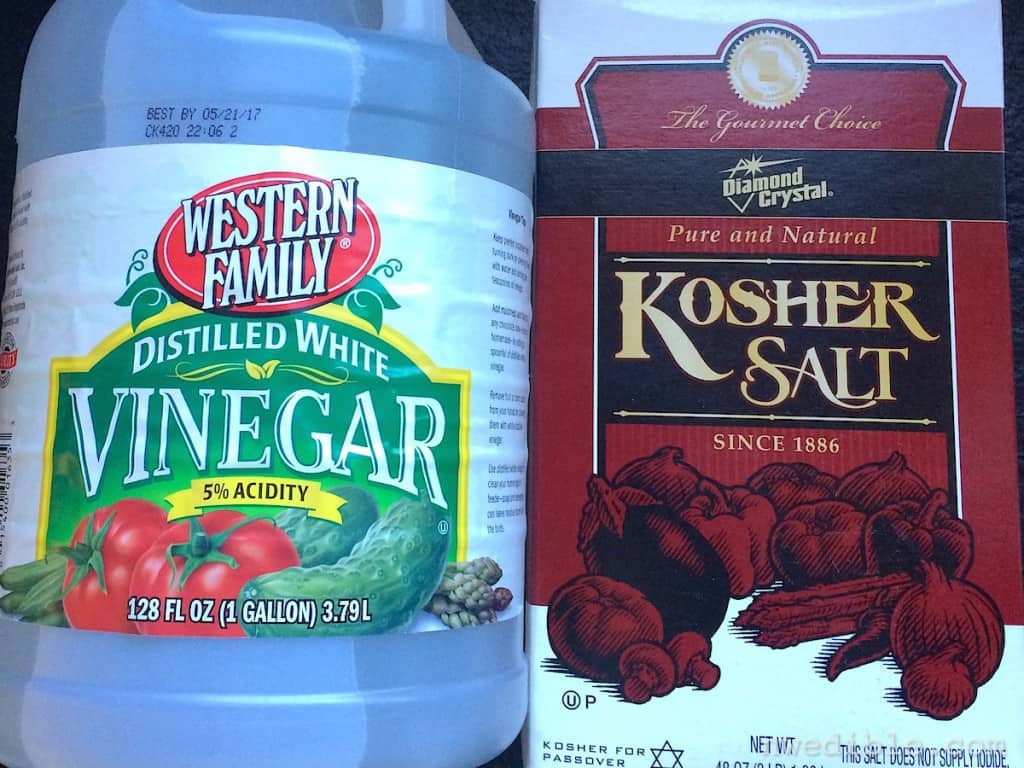
Stock up on the basics you know will be used in your preserving. Vinegar, salt and sugar don’t go bad, and it’s such a pain to have to run out to the store if you find yourself suddenly out of apple cider vinegar. If you can a lot, all these things are available for far less in bulk at stores like Costco.
Check through your spices, too, and make sure you’re good for dill seed, black peppercorns, cinnamon, pickling spice, or whatever spices you know will be used. I highly recommend buying your spices in bulk. Fresh spices mean tastier preserves!
10. Don’t Go It Alone
While they aren’t technically “gear,” one of the most useful tools in your canning kitchen is a productive friend by your side! It’s just more fun to do this kind of work with another person, so text your friends, call your mom, email your neighbor and see who might be up for an afternoon of pickling or jamming.
Alternatively, if your kitchen can’t handle the chaos of multiple canners at once or you just prefer to can in meditative contemplation, throw a canned food swap after the jars cool and the seals set. A canning swap is like the late summer equivalent of a holiday cookie swap, and is a fantastic way to get more variety in your preserves.
Just, do me a favor, make sure anyone you are swapping jars with follows the same high modern safety standards that I know you do, and can confidently and proudly explain how their product was made.
The Giveaway!
Margaret and I are each giving away a kit of canning gear that will help you get started. So, enter here and then make sure you go visit A Way To Garden to enter on her site. Twice the possibility of winning! See, I told you canning was better with friends.
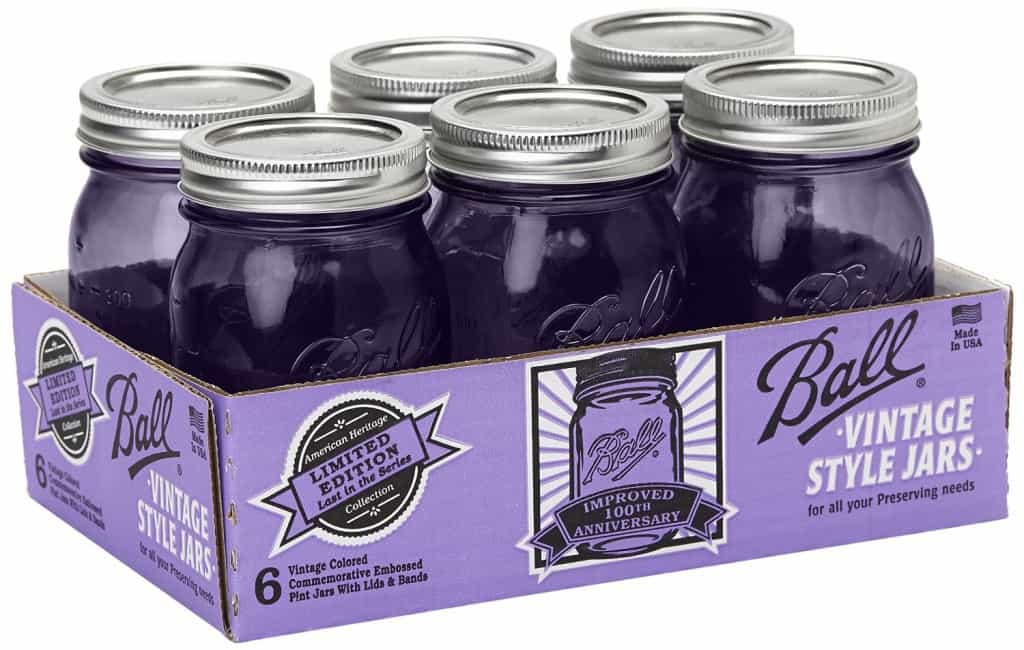
Here’s what you’re entering to win:
- The recently updated [easyazon_link identifier=”B005SK6Y1Q” locale=”US” tag=”nortediblife-20″]Ball Blue Book[/easyazon_link]
- 1 Case (6 jars) of the new [easyazon_link identifier=”B00ODC255Y” locale=”US” tag=”nortediblife-20″]Ball brand Heritage Purple Canning Jars[/easyazon_link] in Pints
- 1 Case (6 jars) of the new Ball brand Heritage Purple Canning Jars in Quarts
- 1 [easyazon_link identifier=”B000HJBFGC” locale=”US” tag=”nortediblife-20″]Norpro Jar Lifter[/easyazon_link]
- [easyazon_link identifier=”B007QT4GMQ” locale=”US” tag=”nortediblife-20″]My favorite canning funnel[/easyazon_link]
- A [easyazon_link identifier=”B007QT4GNU” locale=”US” tag=”nortediblife-20″]specially designed canning scoop[/easyazon_link], to get that jam into the jar.
To Be Entered
Just answer this simple question in the comments section below: “What one food preservation topic do you wish you knew more about?”
The Fine Print
Open to US residents of the United States only.
Contest closes 8 pm Pacific time, Sunday, June 21th 2015.
Winner will be notified by email and shall have 48 hours to respond to claim their prize.
Ball Blue Book and Ball brand Heritage Jars provided by Jarden Home Brands. All other items provided by NWEdible (me!).
And don’t forget to go enter over on Margaret’s site, too!
Good luck!
2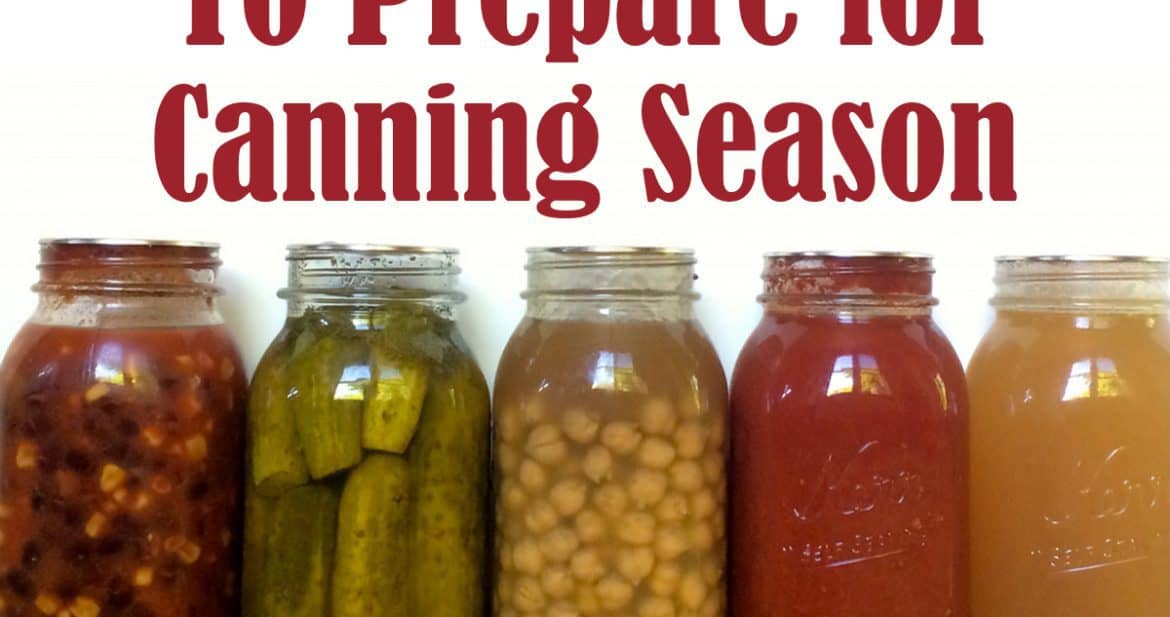
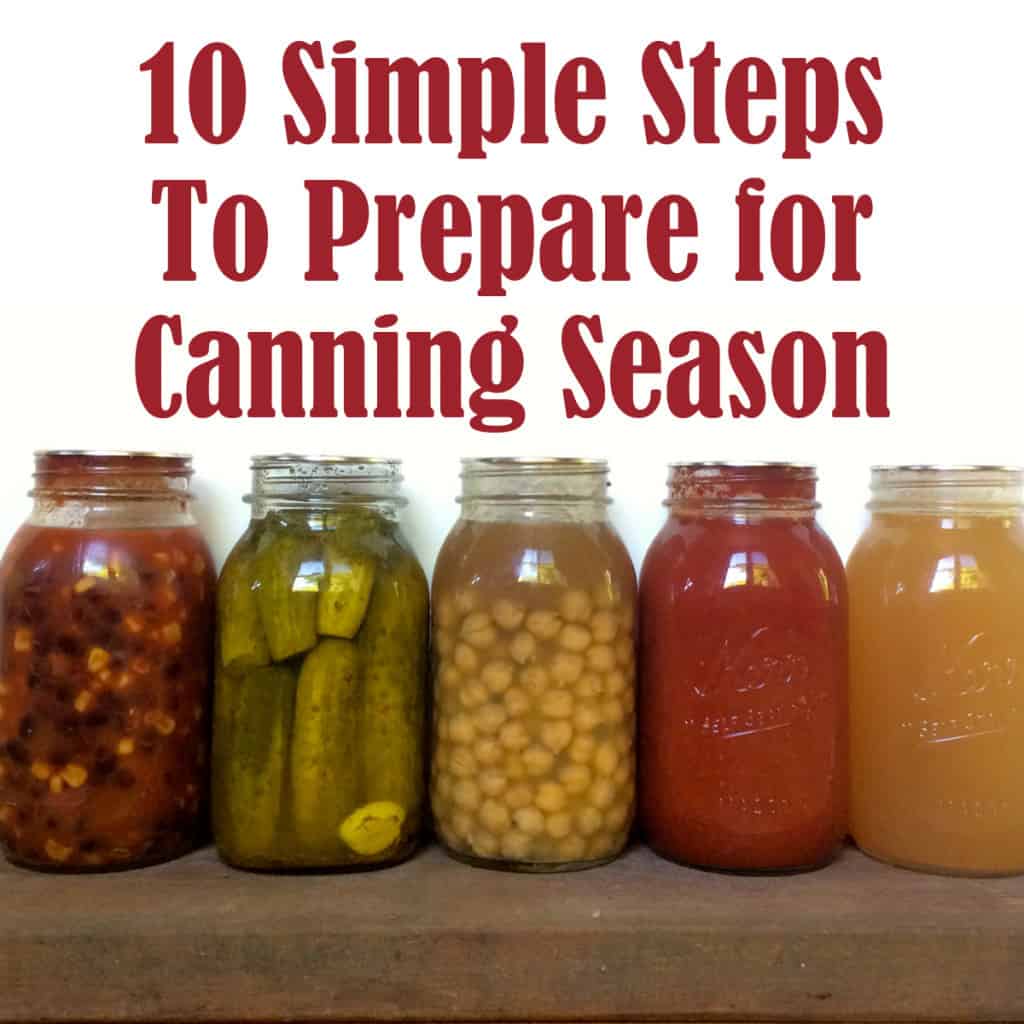
pressure canning. it scares me a lot!
Which varieties of different fruits and veggies can best – the recommendation about Elberta peaches from Valicoff is great!
I would like learn more about safely canning meat. Especially about ground beef or ground chicken as there seems to be conflicting info out there about what is safe.
Btw, I love your blog and have learned so much. The post you did on jams was especially helpful to me. You give so much information but in an easy to understand way. Thanks for all you share!
Canning meat is easy. Just pressure can it, looking for your recommended pressure. For me, in Kansas, it is 11 pounds of pressure, 75 minutes for pints, 90 minutes for quarts. Just follow the directions, and it is so easy.
I use Jackie Clay’s recipe books for help. This year, my first year, I have done chicken, steak, venison and broth. i just add a bit of salt to each jar, fill with browned meat, and can. All turned out amazing! My next bit will be hamburger, but it looks just as easy as the others I have done.
How to make homemade pectin from apples or other so don’t need to buy pectin.
Pressure canning is the bane of my summer. I feel that if had more Ingo, I’d feel more comfortable doing it.
Info, not ingo. Stupid auto correct.
Pickling just about anything. It seems mysterious and alien to me, even though I’ve learned in the past year how to make jellies and jams, chutneys, compotes and preserves. These are all great to have around, but have a lot of sugar. That’s why I’d like to learn pickling–less sugar. Thanks!
Yes! Awesome giveaway! What do I want to know more about canning? Well the dream would be to can salsa- the low acidity makes it tough and there is not too many safe, tested recipes out there. It’s something my family goes through a lot of, and having some more choices would be great!
I would like to learn more about canning meats/fish. Thanks for the chance to win
Love all your articles! I would like some more ideas on canning soups, stews and ‘convenience foods’. My family loves grab and heat meals, and soups are a goto for my boys.
fantastic giveaway! I’d love to learn more not only about canning meat, but the different usages for it as well.
I wish I knew more about canning fruit with fruit juice instead of syrup!
I’d like a reliably good brine for pickles. It always seems too salty for my taste and recipes vary so wildly that it is hard to know what to do.
Pressure canning. I know the basics but I am still wary about really doing it. …
How not to get botulism 101.
Try this post: http://nwedible.com/how-not-to-die-from-botulism-what-home-canners-need-to-know-about-the-worlds-most-deadly-toxin/
It’s very good, and it’s what convinced me I wasn’t going to kill my family with homemade jam…
Pressure canning, for sure. This will be my first season with one!
Salt preservation!
Canning beans, like garbanzos and black beans!
Pickling! Notably brines and such. I’m a heart patient so I’ve been searching for a workable low-sodium brine. They do exist, but they’re hard to find…
Pressure canning. I bought an All American and I am terrified.
I have wanted to make pickles for a couple of years now – going to try them this year. Reading your articles have also sparked my interest in canning dry beans. Thank you for all your great helpful information and a chance for the giveaway.
Easy answer: pressure canning! I miss home canned green beans but am so scared of the process.
I have great memories from my childhood of my mother canning (and related things like putting legwarmers on my arms to go out to the raspberry patch). Jams and dill beans, I know she made other things, but those were the things in the dead of winter that were worth braving the monsters in the basement pantry to retrieve a jar. I’m still new to canning myself, and while I can competently follow recipes, I feel like somehow I’m missing the “magic” of things. I haven’t lived near my mom for more than 10 years and haven’t had the opportunity to watch her and learn all the little things that just never make it to the instructions. So, I’m not sure if I’m interested in learning all the little tidbits of canning that can’t be easily documented, or maybe I’m asking for advice on how to charmingly stalk more old ladies in my neighborhood to show me their secrets, but that’s what I want to know.
I wish I knew more about pressure canning
Whats worth canning vs freezing
I’m with the pressure canning crowd! I’d love to learn more, it just seems so intimidating.
..fermenting..I love sauerkrauts and all sorts of crunchy ..amazingly redolent ..relishes..but they are on my list of things to conquer …I have some lovely memories of eating with neighbors and being little and not liking or even wanting to taste the slightly strange food on my plate…and then suddenly one year realizing it was fabulous..oh to recreate that feeling..that discovery .
It’s all new to me and very overwhelming, so I would want to start with the easy stuff. Your website and book looks excellent! Thanks for the giveaways! 🙂
Loved your interview with Margaret! Hoping to enter here for the giveaway
I’d like to learn more about canning fruits without sugar. I love your website, and am so happy to have discovered it just now!
I have low-sugar strawberry jam left (my family doesn’t like low sugar anything!), some basil jelly and one jar of blueberry. Loved the podcast! Thank you for this chance to win!
I would love to learn more about pressure canning. I do a lot of refrigerator pickles and freeze the majority of what comes from my garden, but pressure canning terrifies me. Both the thought of botulism and the fear of explosions keep me from trying it.
I wish I had a friend to show me. I would feel more confident than doing it myself and worrying about botulism.
Count me in. Been doing canning awhile but love to learn new things.
I only do the water bath method now but want to learn more about pressure canning and get myself a pressure canner. Thanks for all of the tips and the chance to win.
I have some jars of bread and butter pickles left from 2014’s growing season. This year I’ve canned blueberry and raspberry jam. Today I’ll be canning peach preserves. I especially enjoy canning the fruits because of the peak freshness and being able to control the amount of sugar. This is my first year growing veggies in containers on a patio since we’ve moved to a condo; but I’m happy to know there’s a Farmer’s Mrkt close by for me to supplement tomato canning time.
Thanks for the great canning article with Margaret! Still would like to learn more about pickling other veggies than cakes!
My pickles never seem to come out right, either the flavor fades by January or they are soft. I really liked my mother’s pickled baby okra and green tomatoes and enjoy the mixed pickled vegetables when I can find them in the store, but they’re so expensive.
My daughter in law is new to canning.
I love pickled beets and bread and butter pickles.
I would love to learn about canning my fruits and veggies with the hot bath method (?), I’m not at all confident, tried it once with pickles but was afraid to eat them!!! They all had an air pocket on top and I just knew I’d get botulism!
Frozen berries. I should use them today in a smoothie! Ate the last of the pesto a couple of weeks ago; basil in the garden is looking good so I ‘ll be making more soon. Everything else is gone, gone, gone. Except that I have a jar of mincemeat made in 1982 in the pantry downstairs. I do love to look at it and think of how much fun my friends and I had making it using a traditional English recipe under the guidance of a new friend from London. I promise not to eat it!
Learned so much from your podcast with Margaret. I would like to learn about freezing and canning foods which are ready to eat. In other words,, not just putting up ingredients but in preserving soups, pesos,,etc. that can just be taken out and eaten.
Is it possible to make jam with no sweetener at all? And also what’s best to can, what to freeze?
It’s almost peach season. I could use these items! Fingers crossed!
Canning dry beans and putting up pesto.
Working on Jams with no sugar but nothing artificial either- using fruit concentrates??
Wish I knew more about low sugar preserving and using stevia.–djs
A friend has an enormous raspberry patch that I can pick from after she is done….yummy. Can I can the raspberry jam that I make? I usually make it and freeze it.
Would love to learn more about pressure canning. Have only done hot water bath so far and want to have more canning options.
I am kind of afraid to start Pressure Canning. My daughter bought me a canner. I need to learn how to SAFELY can things!
I would like to know more recipes that do not require using a lot of produce. It is just the two of us most of the time and I would prefer to freeze or can in smaller amounts.
Debbie, you might find “The Complete Book of Small Batch Preserving” useful. It’s just two of us in my home too, and I like it. http://smile.amazon.com/Complete-Book-Small-Batch-Preserving-Year-Round/dp/1554072565/ref=sr_1_1?s=books&ie=UTF8&qid=1434740495&sr=1-1&keywords=small+batch+preserving
Erica, if this counts as an entry (or even if not!) the preservation technique I’d most like to learn about is smoking. Smoked meats (including fishes!), and so on.
I’m new to canning, I freeze roasted tomatoes and sauce, make freezer jam and freeze veggies. Last fall we had a power failure where we lost everything, so this year I decided I’d like to try canning.
Thanks for all the great info.